Judith M. Fertig's Blog
June 17, 2016
How to Host a Foodie Novel Book Club
I have been part of a culinary book club for the past 20 years or so--we can never agree on just when we started or how long we've been meeting, it has been that long.
I think I was just finishing up the Rambler badge in Girl Scouts. Or had I just won the spelling bee? More likely, I was doing laundry on weekends for a college-age child.
But whatever.
This book club has been one of the joys of my life. Eight of us meet in January to select our culinary-themed books--they can be cookbooks, biographies or autobiographies, memoirs, or foodie novels. Each person chooses a book and a month that they can host book club in their homes.
The hostess makes the main dish and provides the beverages. The rest of us bring a dish. The dishes might be from the cookbook or inspired by the novel or biography.
Liz always likes to host when we can be outside. We will read a book, enjoy a gourmet potluck of dishes everyone brought, and then go outside and watch a movie on her patio. We've seen "Moonstruck" (Italian cookbooks) and "Chocolat" (Chocolat), among others.
Roxanne introduced us all to the Pioneer Woman, the Julie and Julia blog, and a to-die-for cookie exchange.
At Gayle's condo, we compared the novels of the late, great Pat Conroy with the cookbook he wrote The Pat Conroy Cookbook: Recipes and Stories of My Life. And, of course, enjoyed coastal Southern food.
We explored the world of Chef Thomas Keller at Kathy's house and we didn't have to book a table a year in advance!
Vicki, a food stylist, always passes along a great tip. At her house, we cooked our way through Virginia Willis' Bon Appetit, Y'All.
We once read Epitaph for a Peach, a memoir from a Japanese-American farmer who grew fabulous peaches that were not tough enough for shipping by truck. The next month when we were reading Susan Herrmann Loomis' French Farmhouse Cookbook, I splurged and had some Suncrest peaches Fed-Exed as a treat and we still talk about how juice-dripping-down-your-chin delicious they were.
Karen likes to host in winter, when we can sit around a table in front of her fireplace. We usually do a comfort food book such as French Comfort Food or something by Julia Child.
Recently, our group was kind enough to read advance copies of The Memory of Lemon and my good friend (and bbq co-author) Karen hosted.
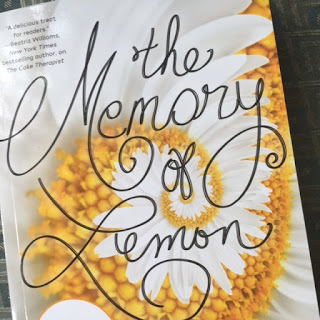
And here's how we did it.
The Drinks
A signature drink for a book club is always fun and generally easy to do. Karen added a jigger or so of limoncello to a champagne flute, then topped it up with prosecco (or other sparkling wine like a Spanish cava or a French champagne). This made an easy and refreshing lemony cocktail for a pre-book club toast.
For a non-alcoholic option, make Porch Swing Lemonade and serve it over ice.
Porch Swing Lemonade
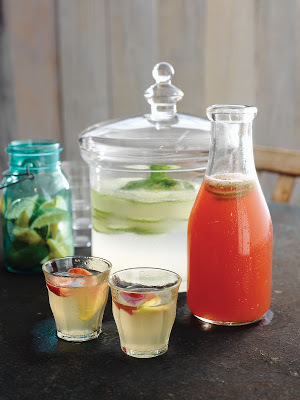
Adapted from Heartland: The Cookbook by Judith Fertig.Serves 4 to 6Fresh Herb Syrup:1 cup sugar¾ cup water½ cup packed fresh aromatic herb leaves, such as basil or lemon balm1 cup freshly squeezed lemon juice (from about 7 large lemons)1 1/2 cups waterFresh lemon slices, for garnishSprigs of lemon balm or rosemary, for garnish
For the syrup, combine the sugar, water and herbs in a large microwave-safe glass measuring cup. Microwave on High for 3 to 4 minutes or until the sugar dissolves. Let the mixture steep for 20 to 30 minutes to extract the best flavor.Strain the mixture into a bowl and let cool. Use right away or store in a covered glass jar and refrigerate for up to 2 weeks.
Stir the lemon juice, syrup, water, and sugar together in a large pitcher. Add lemon or lime slices and herb sprigs, if you wish. Serve cold.
What Dishes to Bring
Even if your book club generally only does appetizers or desserts, sometimes it's fun to change things up a bit and offer a light meal. Especially in summer. That's what we did.
Our theme for recipes was lemon.
Karen asked that we let her know what dish we were going to bring ahead of time, so we didn't end up with 8 lemon desserts. (But if your book club just serves dessert, 8 lemon desserts could be heaven or over-kill.)
You can assign recipes and e-mail them to club members or trust members to choose and prepare good ones. Or have people bring prepared food if they don't cook. You can ask or be surprised. It's your book club!
Book club is also a good excuse to use that china or glassware you've been wanting to pull out. You know your book club members will appreciate a lovely table or an artistic gesture. Karen used the pink Depression glass lunch set passed down from her mother-in-law.
We usually serve buffet-style, as this makes it easier on the hostess.
Drool Alert: Here is what we had. . .
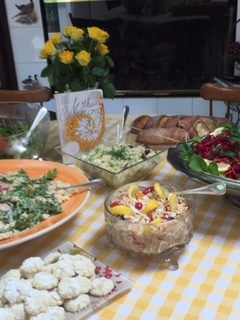
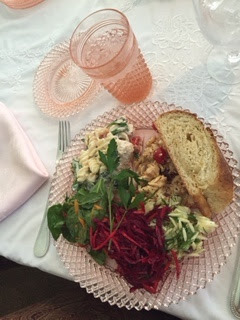
The Food
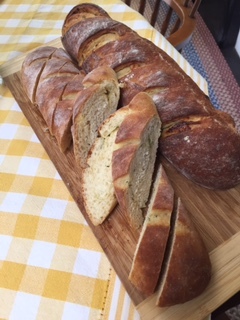
Kathy is our resident bread baker. She adapted a recipe from Heartland: The Cookbook and included honey and lemon zest for a bread with a tender, moist crumb and an aromatic flavor.
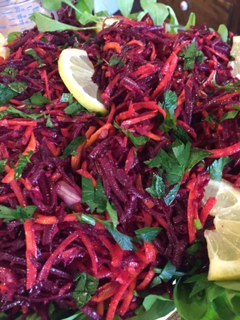
Liz brought a shredded raw carrot and raw beet salad dressed with a lemon vinaigrette made with walnut oil from Virginia Willis' Bon Appetit, Y'All. Liz brought the carrots and beets separately, in sealable plastic bags, to keep the colors intact for as long as possible. Once you toss the salad, the colors start to blend, but it's still beautiful, don't you think?
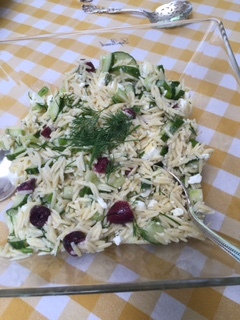
I brought this Greek Orzo Salad with Cucumber, Lemon, Kalamata Olives, and Feta. It's a great pasta salad that I could just eat all day.
Here's how you make it
Greek Orzo Salad with Cucumber, Lemon, Kalamata Olives, and FetaServes 8
½ pound (1 cup) orzo, cooking in boiling water until al dente and drained1 bunch green onions, chopped with some of the green1 cucumber, peeled, seeded and dicedA handful of baby spinach leaves8 ounces feta cheese, crumbled½ cup pitted and chopped Kalamata olives1/3 cup olive oil1/3 cup fresh lemon juice2 cloves minced garlic2 tablespoons chopped fresh dill or 2 teaspoons dried dill weed¼ teaspoon dried oreganoSalt and pepper to tasteFresh spinach leaves to line the salad bowl
In a large bowl, combine the drained orzo, green onions, spinach, cucumber, feta, and olives. In a small bowl, whisk the olive oil, lemon juice, and seasonings together. Pour the dressing of the orzo and toss to blend. Refrigerate until ready to serve.
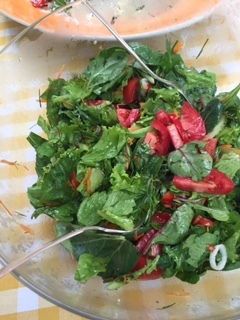
Fresh Green Salad with Work of Art Vinaigrette
The simple vinaigrette of 4 ingredients magically dresses a big bowl of salad greens. Fresh lemon heightens the flavor.Serves 8
8 cups salad greensFresh herbs, nasturtium blossoms, or whatever you like in your salad
1 large garlic clove, minced1 teaspoon coarse kosher or sea salt1 tablespoon fresh lemon juice3 tablespoons olive oil
Place the salad greens and accompaniments in a large salad bowl.
In a small bowl using a wooden spoon or in a mortar and pestle, mash the garlic with the salt until it makes a fine paste. Stir in the lemon juice, then the olive oil. Pour the dressing over the salad and toss to blend. Serve right away.
Karen decided to test a recipe for our upcoming Red, White, and 'Que cookbook (Running Press, 2017), so she made grilled chicken spiedini over pasta tossed with arugula. Fabulous, but Secret. For now.
For more lemon recipes in a colorful downloadable booklet, e-mail me at judithfertig1@gmail.com and I'll send them to you.
Happy Reading!
I think I was just finishing up the Rambler badge in Girl Scouts. Or had I just won the spelling bee? More likely, I was doing laundry on weekends for a college-age child.
But whatever.
This book club has been one of the joys of my life. Eight of us meet in January to select our culinary-themed books--they can be cookbooks, biographies or autobiographies, memoirs, or foodie novels. Each person chooses a book and a month that they can host book club in their homes.
The hostess makes the main dish and provides the beverages. The rest of us bring a dish. The dishes might be from the cookbook or inspired by the novel or biography.
Liz always likes to host when we can be outside. We will read a book, enjoy a gourmet potluck of dishes everyone brought, and then go outside and watch a movie on her patio. We've seen "Moonstruck" (Italian cookbooks) and "Chocolat" (Chocolat), among others.
Roxanne introduced us all to the Pioneer Woman, the Julie and Julia blog, and a to-die-for cookie exchange.
At Gayle's condo, we compared the novels of the late, great Pat Conroy with the cookbook he wrote The Pat Conroy Cookbook: Recipes and Stories of My Life. And, of course, enjoyed coastal Southern food.
We explored the world of Chef Thomas Keller at Kathy's house and we didn't have to book a table a year in advance!
Vicki, a food stylist, always passes along a great tip. At her house, we cooked our way through Virginia Willis' Bon Appetit, Y'All.
We once read Epitaph for a Peach, a memoir from a Japanese-American farmer who grew fabulous peaches that were not tough enough for shipping by truck. The next month when we were reading Susan Herrmann Loomis' French Farmhouse Cookbook, I splurged and had some Suncrest peaches Fed-Exed as a treat and we still talk about how juice-dripping-down-your-chin delicious they were.
Karen likes to host in winter, when we can sit around a table in front of her fireplace. We usually do a comfort food book such as French Comfort Food or something by Julia Child.
Recently, our group was kind enough to read advance copies of The Memory of Lemon and my good friend (and bbq co-author) Karen hosted.

And here's how we did it.
The Drinks
A signature drink for a book club is always fun and generally easy to do. Karen added a jigger or so of limoncello to a champagne flute, then topped it up with prosecco (or other sparkling wine like a Spanish cava or a French champagne). This made an easy and refreshing lemony cocktail for a pre-book club toast.
For a non-alcoholic option, make Porch Swing Lemonade and serve it over ice.
Porch Swing Lemonade

Adapted from Heartland: The Cookbook by Judith Fertig.Serves 4 to 6Fresh Herb Syrup:1 cup sugar¾ cup water½ cup packed fresh aromatic herb leaves, such as basil or lemon balm1 cup freshly squeezed lemon juice (from about 7 large lemons)1 1/2 cups waterFresh lemon slices, for garnishSprigs of lemon balm or rosemary, for garnish
For the syrup, combine the sugar, water and herbs in a large microwave-safe glass measuring cup. Microwave on High for 3 to 4 minutes or until the sugar dissolves. Let the mixture steep for 20 to 30 minutes to extract the best flavor.Strain the mixture into a bowl and let cool. Use right away or store in a covered glass jar and refrigerate for up to 2 weeks.
Stir the lemon juice, syrup, water, and sugar together in a large pitcher. Add lemon or lime slices and herb sprigs, if you wish. Serve cold.
What Dishes to Bring
Even if your book club generally only does appetizers or desserts, sometimes it's fun to change things up a bit and offer a light meal. Especially in summer. That's what we did.
Our theme for recipes was lemon.
Karen asked that we let her know what dish we were going to bring ahead of time, so we didn't end up with 8 lemon desserts. (But if your book club just serves dessert, 8 lemon desserts could be heaven or over-kill.)
You can assign recipes and e-mail them to club members or trust members to choose and prepare good ones. Or have people bring prepared food if they don't cook. You can ask or be surprised. It's your book club!
Book club is also a good excuse to use that china or glassware you've been wanting to pull out. You know your book club members will appreciate a lovely table or an artistic gesture. Karen used the pink Depression glass lunch set passed down from her mother-in-law.
We usually serve buffet-style, as this makes it easier on the hostess.
Drool Alert: Here is what we had. . .


The Food

Kathy is our resident bread baker. She adapted a recipe from Heartland: The Cookbook and included honey and lemon zest for a bread with a tender, moist crumb and an aromatic flavor.

Liz brought a shredded raw carrot and raw beet salad dressed with a lemon vinaigrette made with walnut oil from Virginia Willis' Bon Appetit, Y'All. Liz brought the carrots and beets separately, in sealable plastic bags, to keep the colors intact for as long as possible. Once you toss the salad, the colors start to blend, but it's still beautiful, don't you think?

I brought this Greek Orzo Salad with Cucumber, Lemon, Kalamata Olives, and Feta. It's a great pasta salad that I could just eat all day.
Here's how you make it
Greek Orzo Salad with Cucumber, Lemon, Kalamata Olives, and FetaServes 8
½ pound (1 cup) orzo, cooking in boiling water until al dente and drained1 bunch green onions, chopped with some of the green1 cucumber, peeled, seeded and dicedA handful of baby spinach leaves8 ounces feta cheese, crumbled½ cup pitted and chopped Kalamata olives1/3 cup olive oil1/3 cup fresh lemon juice2 cloves minced garlic2 tablespoons chopped fresh dill or 2 teaspoons dried dill weed¼ teaspoon dried oreganoSalt and pepper to tasteFresh spinach leaves to line the salad bowl
In a large bowl, combine the drained orzo, green onions, spinach, cucumber, feta, and olives. In a small bowl, whisk the olive oil, lemon juice, and seasonings together. Pour the dressing of the orzo and toss to blend. Refrigerate until ready to serve.

Fresh Green Salad with Work of Art Vinaigrette
The simple vinaigrette of 4 ingredients magically dresses a big bowl of salad greens. Fresh lemon heightens the flavor.Serves 8
8 cups salad greensFresh herbs, nasturtium blossoms, or whatever you like in your salad
1 large garlic clove, minced1 teaspoon coarse kosher or sea salt1 tablespoon fresh lemon juice3 tablespoons olive oil
Place the salad greens and accompaniments in a large salad bowl.
In a small bowl using a wooden spoon or in a mortar and pestle, mash the garlic with the salt until it makes a fine paste. Stir in the lemon juice, then the olive oil. Pour the dressing over the salad and toss to blend. Serve right away.
Karen decided to test a recipe for our upcoming Red, White, and 'Que cookbook (Running Press, 2017), so she made grilled chicken spiedini over pasta tossed with arugula. Fabulous, but Secret. For now.
For more lemon recipes in a colorful downloadable booklet, e-mail me at judithfertig1@gmail.com and I'll send them to you.
Happy Reading!
Published on June 17, 2016 07:03
May 31, 2016
Mulberries, Carolina Parroquets, and Synchronicity
This past weekend, I was reminded again of the power of synchronicity or that magical coming-together of "your wish is my command."
I wanted to make a fruit crisp for a family dinner. When I went out to the backyard, I saw that along the fence, volunteer mulberry trees were full of berries. Wild, organic, free, and convenient. Perfect! Thank you, Universe.
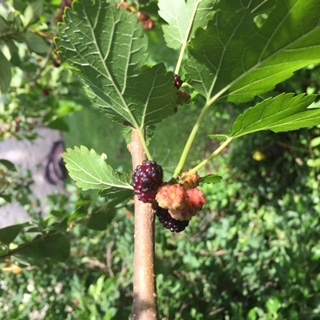
I've picked mulberries since I was a kid at camp. Years later, when I was working on Prairie Home Cooking, I gathered them to test a Russian Mennonite recipe from central Kansas, which became the fruit crisp below.
Ripe mulberries get squishy fast, so you don't often see them at farmer's markets. But with a little luck, you can find them if you tune in your radar.
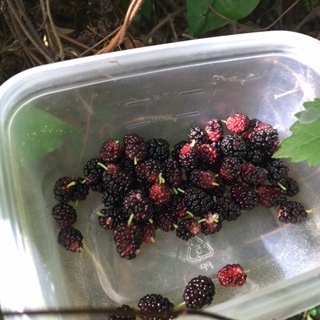
Sometimes, the universe sends you a message that you're on the right track through synchronicity. When I was working on The Cake Therapist
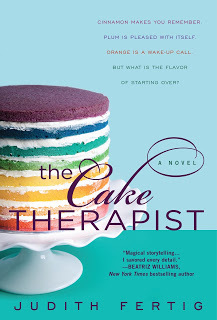
and writing a flashback about The Singing Lady, a woman who had a children's radio show out of Chicago, I happened upon a vintage cereal box from the 1930s with a Singing Lady story on the back. I got that feeling right under my heart that I was on the right track. Keep going, the universe seemed to say.
The same thing happened when I was writing The Memory of Lemon.
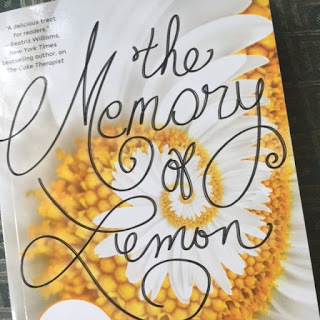
I was writing a flashback about John James Audubon's time in Cincinnati. I was also reading first-person accounts of passenger pigeons and Carolina parroquets that were plentiful in 1820's Ohio, but now extinct. And I happened upon this Audubon print:

Just what I needed--a look at Carolina parroquets in all their glittery plumage. Again, "Keep going" whispered to me at a time when a writer can feel like it's all too much.
So I wasn't too surprised when the thing I really wanted just turned up in a very explainable, yet very magical way.
Mulberries.
Next time, maybe I should ask for a New York Times bestseller. Oops, I just did. . . .
Lemon-Zested Mulberry and Rhubarb Crisp
If mulberries are available, try mulberries in place of all or some of the blackberries in this wonderful crisp—just as good for breakfast as it is for dessert, if you have any left!Serves 8
2 cups fresh mulberries (any little green stems snipped off) or blackberries4 cups 1-inch slices fresh rhubarb1 tablespoon instant tapiocaJuice and grated zest of 1 lemon2 cups sugar1 cup all-purpose flour½ cup unsalted butter, softenedVanilla ice cream for serving
Preheat the oven to 375 degrees. Lightly butter a large baking dish. Combine the berries, rhubarb, tapioca, lemon juice, and 1 cup of the sugar in a large bowl. Stir gently to blend well.
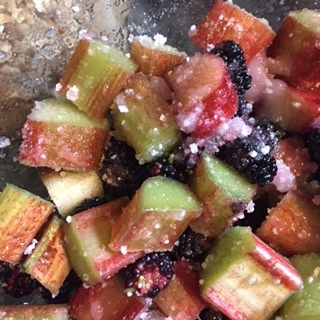
Transfer the fruit mixture to the prepared baking dish.
Combine the remaining 1 cup sugar with the flour, lemon zest and butter in a bowl.
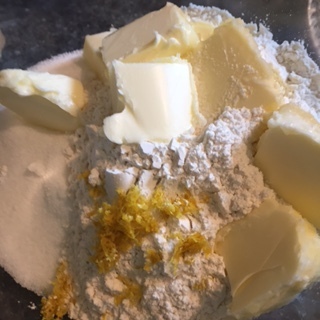
Mix with your fingers to make a streusel or large crumbs.
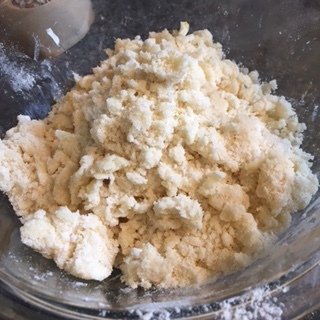
Sprinkle the streusel on top of the fruit in the baking pan.
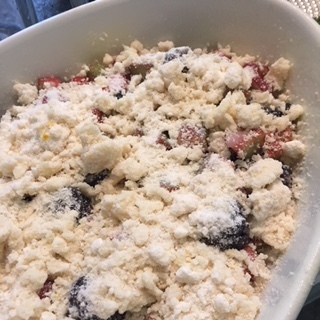
Bake for 35 minutes or until bubbling. To serve, scoop the warm crisp into a bowl and top with a scoop of ice cream.
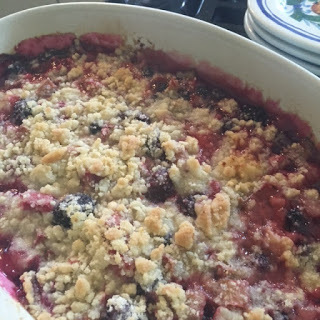
I wanted to make a fruit crisp for a family dinner. When I went out to the backyard, I saw that along the fence, volunteer mulberry trees were full of berries. Wild, organic, free, and convenient. Perfect! Thank you, Universe.

I've picked mulberries since I was a kid at camp. Years later, when I was working on Prairie Home Cooking, I gathered them to test a Russian Mennonite recipe from central Kansas, which became the fruit crisp below.
Ripe mulberries get squishy fast, so you don't often see them at farmer's markets. But with a little luck, you can find them if you tune in your radar.

Sometimes, the universe sends you a message that you're on the right track through synchronicity. When I was working on The Cake Therapist

and writing a flashback about The Singing Lady, a woman who had a children's radio show out of Chicago, I happened upon a vintage cereal box from the 1930s with a Singing Lady story on the back. I got that feeling right under my heart that I was on the right track. Keep going, the universe seemed to say.
The same thing happened when I was writing The Memory of Lemon.

I was writing a flashback about John James Audubon's time in Cincinnati. I was also reading first-person accounts of passenger pigeons and Carolina parroquets that were plentiful in 1820's Ohio, but now extinct. And I happened upon this Audubon print:

Just what I needed--a look at Carolina parroquets in all their glittery plumage. Again, "Keep going" whispered to me at a time when a writer can feel like it's all too much.
So I wasn't too surprised when the thing I really wanted just turned up in a very explainable, yet very magical way.
Mulberries.
Next time, maybe I should ask for a New York Times bestseller. Oops, I just did. . . .
Lemon-Zested Mulberry and Rhubarb Crisp
If mulberries are available, try mulberries in place of all or some of the blackberries in this wonderful crisp—just as good for breakfast as it is for dessert, if you have any left!Serves 8
2 cups fresh mulberries (any little green stems snipped off) or blackberries4 cups 1-inch slices fresh rhubarb1 tablespoon instant tapiocaJuice and grated zest of 1 lemon2 cups sugar1 cup all-purpose flour½ cup unsalted butter, softenedVanilla ice cream for serving
Preheat the oven to 375 degrees. Lightly butter a large baking dish. Combine the berries, rhubarb, tapioca, lemon juice, and 1 cup of the sugar in a large bowl. Stir gently to blend well.

Transfer the fruit mixture to the prepared baking dish.
Combine the remaining 1 cup sugar with the flour, lemon zest and butter in a bowl.

Mix with your fingers to make a streusel or large crumbs.

Sprinkle the streusel on top of the fruit in the baking pan.

Bake for 35 minutes or until bubbling. To serve, scoop the warm crisp into a bowl and top with a scoop of ice cream.

Published on May 31, 2016 15:58
May 23, 2016
Grilled Asparagus Flatbread with Lemon Aioli
We’re continuing our lemon theme, in honor of the upcoming book birthday of

but with grilling this time. I am a cookbook author and a bbq queen, too! I wear a chef's hat and a tiara when I'm not sitting in front of my computer, waiting for inspiration to strike.
But I digress. . .
Our outdoor kitchens today may be stainless steel and the open fire may come from hardwood lump charcoal or a propane tank. But our love for French-inspired food continues.
Barbecuing with a French accent is easy. Simply pair a grilled Brie and tapenade-stuffed chicken breast with a classic bistro salad, a baguette and a bottle of wine or a cocktail. Stir up an easy Bearnaise Sauce before you throw the steak on the coals.
Slice the new “it” vegetable—cauliflower—into “paillards” or steaks to grill to a delicious turn. You can’t believe how great cauliflower can taste with a few grill marks and a little Orange-Olive Pistou, a south-of-France riff on pesto or salsa.

For a wow-y appetizer or main dish, grill asparagus and flatbreads . Then put them together with a dollop of lemon aioli and a sprinkling of feta and pistachios for a flavor combination that is c’est magnifique!
Or put a classic French daube or stew on your smoker to get that ancient flavor of hearth cooking.
Voilà! That’s BBQ Bistro by Karen Adler and Judith Fertig (Running Press, 2015. These Kansas City authors continue their fresh take on backyard barbecue from The Gardener and the Grill and Patio Pizzeria. To increase your grilling savoir faire, BBQ Bistrooffers an array of barbecue techniques from grilling on a plancha and cast iron to rotisserie, grill-roasting, herb grilling, and slow smoking.

These techniques reach back to the hearth-style cooking of long ago and blaze ahead to the fresher way we want to eat now.
Lemon AioliAdapted from BBQ Bistro by Karen Adler and Judith Fertig
Aioli is a garlicky mayonnaise from Provence used to accompany fish and shellfish, but we love it with grilled salmon or a platter of grilled vegetables. The trick to making light, fluffy aioli in a food processor is using the whole egg instead of just egg yolks. If the food safety of raw eggs is a concern for you, use pasteurized eggs in their shells or 1/2 cup (125ml) pasteurized liquid whole egg. This is a milder aioli with a hint of lemon.
Makes about 2 cups (500 ml)
2 large eggs2 to 4 garlic cloves, minced1 tablespoon freshly squeezed lemon juice (add a little lemon zest for more lemon flavor)1 tablespoon Dijon mustard11/2 cups (375 ml) olive oil
In a food processor, combine the eggs, garlic, lemon juice, and mustard; pulse to blend. With the motor running, through the food tube, gradually add the olive oil, processing until thick and creamy. Store in an airtight container in the refrigerator for up to 3 days.
Grilled Asparagus Flatbread with Pistachios, Feta, and Lemon Aioli
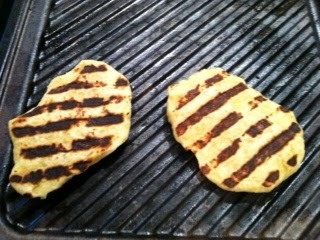

French flatbreads are deliciously simple. In the north, the Alsatian tarte flambée or flammekuchen is a thin flatbread made with yeast dough and topped with crème fraiche, lardons (bacon), and onion. In the south, fougasse has the filling rolled into the dough and is shaped in a leaf form. We have taken the yeast dough, rolled it thin, and then grilled it to await the French toppings of grilled asparagus, lemon aioli, feta, and pistachios. (The French feta cheese is mild and creamy and usually made from excess sheep’s milk that is not used for making Roquefort.) With a flute of Champagne, life is good.
Serves 4
1 recipe Lemon Aioli, prepared (above)1 pound (450 g) prepared pizza doughOlive oil for brushing1 pound (450 g) fresh asparagusKosher or sea salt and freshly ground black pepper4 ounces (125 g) French feta cheese, crumbled1/4 cup (30 g) shelled, roasted, and chopped pistachios
Prepare a medium-hot indirect fire in your grill.
Divide the dough into four parts. Pat or roll each part into a 6-inch (15-cm) oval on a floured surface. Brush both sides with olive oil and place on a baking sheet to take to the grill.
Trim the asparagus, brush with olive oil, season with salt and pepper, and take out to the grill. Place the asparagus spears perpendicular to the grill rack. Grill for 8 to 10 minutes, turning often, until the asparagus is tender-crisp and has charred a bit. Transfer to a cutting board and chop into 2-inch-long (5 cm) diagonal pieces. Set aside.
Place the dough ovals on the grill grates. Grill for 2 to 3 minutes or until the underside has good grill marks. Transfer the dough ovals to the indirect side, grilled side up. Dollop Lemon Aioli on the top of each grilled dough oval and spread it quickly with the back of the spoon. Scatter with asparagus, and then sprinkle with feta and pistachios. Close the grill lid, and grill for 3 to 4 minutes or until the feta is beginning to melt and the dough has cooked through.
Serve warm and pass the remaining Lemon Aioli at the table.

but with grilling this time. I am a cookbook author and a bbq queen, too! I wear a chef's hat and a tiara when I'm not sitting in front of my computer, waiting for inspiration to strike.
But I digress. . .
Our outdoor kitchens today may be stainless steel and the open fire may come from hardwood lump charcoal or a propane tank. But our love for French-inspired food continues.
Barbecuing with a French accent is easy. Simply pair a grilled Brie and tapenade-stuffed chicken breast with a classic bistro salad, a baguette and a bottle of wine or a cocktail. Stir up an easy Bearnaise Sauce before you throw the steak on the coals.
Slice the new “it” vegetable—cauliflower—into “paillards” or steaks to grill to a delicious turn. You can’t believe how great cauliflower can taste with a few grill marks and a little Orange-Olive Pistou, a south-of-France riff on pesto or salsa.

For a wow-y appetizer or main dish, grill asparagus and flatbreads . Then put them together with a dollop of lemon aioli and a sprinkling of feta and pistachios for a flavor combination that is c’est magnifique!
Or put a classic French daube or stew on your smoker to get that ancient flavor of hearth cooking.
Voilà! That’s BBQ Bistro by Karen Adler and Judith Fertig (Running Press, 2015. These Kansas City authors continue their fresh take on backyard barbecue from The Gardener and the Grill and Patio Pizzeria. To increase your grilling savoir faire, BBQ Bistrooffers an array of barbecue techniques from grilling on a plancha and cast iron to rotisserie, grill-roasting, herb grilling, and slow smoking.

These techniques reach back to the hearth-style cooking of long ago and blaze ahead to the fresher way we want to eat now.
Lemon AioliAdapted from BBQ Bistro by Karen Adler and Judith Fertig
Aioli is a garlicky mayonnaise from Provence used to accompany fish and shellfish, but we love it with grilled salmon or a platter of grilled vegetables. The trick to making light, fluffy aioli in a food processor is using the whole egg instead of just egg yolks. If the food safety of raw eggs is a concern for you, use pasteurized eggs in their shells or 1/2 cup (125ml) pasteurized liquid whole egg. This is a milder aioli with a hint of lemon.
Makes about 2 cups (500 ml)
2 large eggs2 to 4 garlic cloves, minced1 tablespoon freshly squeezed lemon juice (add a little lemon zest for more lemon flavor)1 tablespoon Dijon mustard11/2 cups (375 ml) olive oil
In a food processor, combine the eggs, garlic, lemon juice, and mustard; pulse to blend. With the motor running, through the food tube, gradually add the olive oil, processing until thick and creamy. Store in an airtight container in the refrigerator for up to 3 days.
Grilled Asparagus Flatbread with Pistachios, Feta, and Lemon Aioli


French flatbreads are deliciously simple. In the north, the Alsatian tarte flambée or flammekuchen is a thin flatbread made with yeast dough and topped with crème fraiche, lardons (bacon), and onion. In the south, fougasse has the filling rolled into the dough and is shaped in a leaf form. We have taken the yeast dough, rolled it thin, and then grilled it to await the French toppings of grilled asparagus, lemon aioli, feta, and pistachios. (The French feta cheese is mild and creamy and usually made from excess sheep’s milk that is not used for making Roquefort.) With a flute of Champagne, life is good.
Serves 4
1 recipe Lemon Aioli, prepared (above)1 pound (450 g) prepared pizza doughOlive oil for brushing1 pound (450 g) fresh asparagusKosher or sea salt and freshly ground black pepper4 ounces (125 g) French feta cheese, crumbled1/4 cup (30 g) shelled, roasted, and chopped pistachios
Prepare a medium-hot indirect fire in your grill.
Divide the dough into four parts. Pat or roll each part into a 6-inch (15-cm) oval on a floured surface. Brush both sides with olive oil and place on a baking sheet to take to the grill.
Trim the asparagus, brush with olive oil, season with salt and pepper, and take out to the grill. Place the asparagus spears perpendicular to the grill rack. Grill for 8 to 10 minutes, turning often, until the asparagus is tender-crisp and has charred a bit. Transfer to a cutting board and chop into 2-inch-long (5 cm) diagonal pieces. Set aside.
Place the dough ovals on the grill grates. Grill for 2 to 3 minutes or until the underside has good grill marks. Transfer the dough ovals to the indirect side, grilled side up. Dollop Lemon Aioli on the top of each grilled dough oval and spread it quickly with the back of the spoon. Scatter with asparagus, and then sprinkle with feta and pistachios. Close the grill lid, and grill for 3 to 4 minutes or until the feta is beginning to melt and the dough has cooked through.
Serve warm and pass the remaining Lemon Aioli at the table.
Published on May 23, 2016 16:01
May 17, 2016
Pie Night
From The Memory of Lemon

Pie Night at Neely’s bakery, Rainbow Cake
“ People I had never seen before flocked in, their faces showing a longing you never saw for cake. People’s eyes lit up for a cupcake; cake seemed to signal celebration. But their eyes got filmy, watery, misty when we handed them a slice of pie. Pie was memory. Nostalgia. Pie made people recall simpler, maybe happier times.”
Real-life businesses have inspired both The Cake Therapist and The Memory of Lemon. In creating Neely's fictional bakery, I've been free to gather the best ideas. Seasonal, signature flavors of the month from ice cream parlors like Jeni's Splendid Ice Creams and Graeter's. The look of La Durée, a Parisian tea salon, and their brilliant use of color. In a previous blog post "The Art of a Wedding Cake Tasting," I described how I made pastry chef Neely's ritual of a wedding cake tasting very special after visiting--and sampling from-- Andrea Adams Britt's lovely wedding cake bakery for my own daughter's wedding.
Dolce Bakery, in a Kansas City suburb near where I live, makes their cinnamon rolls, cookies, scones, and cakes from scratch. In the summer when berries and orchard fruits are plentiful, they host Cobbler Night from time to time.
So, why not Pie Night for Neely's bakery? The reason is that she has to come up with pies and tarts that will taste great, hold up, and please the picky palates of a society mother and her folksinger daughter. And I imagined a chorus line of pies.
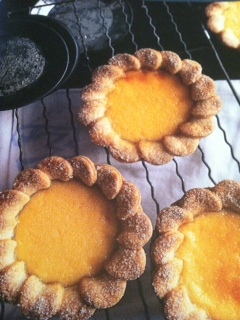
Scalloped tarts with a filling flavored by spicebush berries, a Kentucky native. (Photo by Donna Hay).
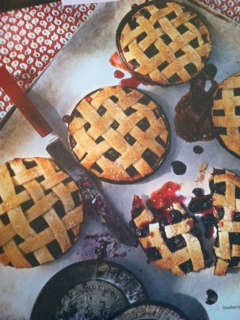
Blackberry tarts with a lattice top, also a Kentucky favorite.
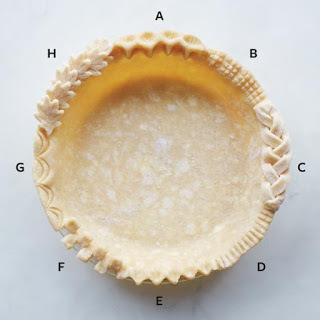
Neely had fun experimenting with all the possibilities in crust and filling.
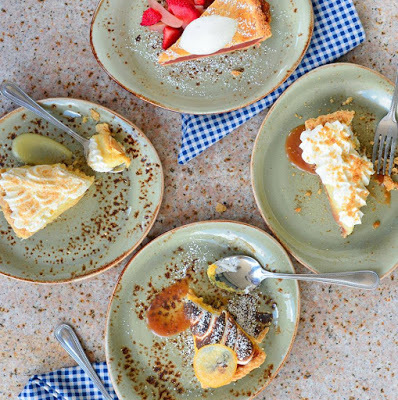
And on Pie Night, her customers sampled pies of all kinds. (These pies are from Rye, a restaurant celebrating Midwestern cuisine and culture in Leawood, Kansas.)
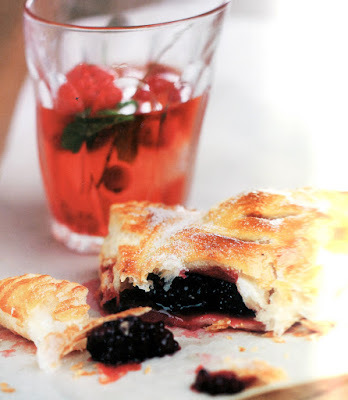
Blackberry and Lavender Turnovers
With a package of puff pastry in the freezer and a jar of good blackberry jam, you can turn fresh blackberries with a hint of lavender into a summer treat. Pack up these turnovers for a summer outdoor concert, a tasty reward after a hike, or a lunchbox goodie. You can find culinary lavender buds at Penzey's, your garden, or online. Recipe from Bake Happy.
Makes 8 turnovers
1 sheet frozen puff pastry (from a 14-ounce/397 397-g or a 16-ounce/454 454-g package), thawed and kept cold in the refrigerator
Blackberry and Lavender Filling:1/2 cup (125 ml) blackberry jam1/2 teaspoon organic, dried culinary-grade lavender buds 11/2 cups (216 g) fresh blackberries1 teaspoon freshly squeezed lemon juice
Glaze:1 large egg, beaten2 tablespoons granulated or raw sugar
Preheat the oven to 375°F (190°C). Line a large baking sheet with parchment paper and set it aside.Place the puff pastry on a lightly floured surface and roll it out to a thickness of 1/4 inch (6 cm). Using a pizza cutter or paring knife, cut the pastry into 8 squares.For the filling, combine the blackberry jam and lavender in a small saucepan overmedium-high heat. Stir the mixture until the jam starts to bubble around the edges. Remove the pan from the heat and stir in blackberries and lemon juice.To assemble the turnovers, brush the perimeter of each pastry square with a little water.Spoon about 1/4 cup (59 ml) of the filling into the center of each pastry square. Fold the squares in half on the diagonal to form a triangle. Press the edges together with the tines of a fork. Brush the top of each turnover with beaten egg and dust with sugar. With a paring knife, make 3 diagonal slits on top of each pastry. Place the turnovers on the prepared baking sheet.Bake for 25 minutes or until the pastry is browned and the filling is bubbling. Remove the baking sheet from the oven and transfer the turnovers to a wire rack to cool. These are best enjoyed the same day they are made.
So Happy Together:Dark Berries + LavenderA little sprinkle of dried lavender buds brings out the “purple” flavor in dark berries such as blackberries, blueberries, marionberries, and black raspberries.


Pie Night at Neely’s bakery, Rainbow Cake
“ People I had never seen before flocked in, their faces showing a longing you never saw for cake. People’s eyes lit up for a cupcake; cake seemed to signal celebration. But their eyes got filmy, watery, misty when we handed them a slice of pie. Pie was memory. Nostalgia. Pie made people recall simpler, maybe happier times.”
Real-life businesses have inspired both The Cake Therapist and The Memory of Lemon. In creating Neely's fictional bakery, I've been free to gather the best ideas. Seasonal, signature flavors of the month from ice cream parlors like Jeni's Splendid Ice Creams and Graeter's. The look of La Durée, a Parisian tea salon, and their brilliant use of color. In a previous blog post "The Art of a Wedding Cake Tasting," I described how I made pastry chef Neely's ritual of a wedding cake tasting very special after visiting--and sampling from-- Andrea Adams Britt's lovely wedding cake bakery for my own daughter's wedding.
Dolce Bakery, in a Kansas City suburb near where I live, makes their cinnamon rolls, cookies, scones, and cakes from scratch. In the summer when berries and orchard fruits are plentiful, they host Cobbler Night from time to time.
So, why not Pie Night for Neely's bakery? The reason is that she has to come up with pies and tarts that will taste great, hold up, and please the picky palates of a society mother and her folksinger daughter. And I imagined a chorus line of pies.

Scalloped tarts with a filling flavored by spicebush berries, a Kentucky native. (Photo by Donna Hay).

Blackberry tarts with a lattice top, also a Kentucky favorite.

Neely had fun experimenting with all the possibilities in crust and filling.

And on Pie Night, her customers sampled pies of all kinds. (These pies are from Rye, a restaurant celebrating Midwestern cuisine and culture in Leawood, Kansas.)

Blackberry and Lavender Turnovers
With a package of puff pastry in the freezer and a jar of good blackberry jam, you can turn fresh blackberries with a hint of lavender into a summer treat. Pack up these turnovers for a summer outdoor concert, a tasty reward after a hike, or a lunchbox goodie. You can find culinary lavender buds at Penzey's, your garden, or online. Recipe from Bake Happy.
Makes 8 turnovers
1 sheet frozen puff pastry (from a 14-ounce/397 397-g or a 16-ounce/454 454-g package), thawed and kept cold in the refrigerator
Blackberry and Lavender Filling:1/2 cup (125 ml) blackberry jam1/2 teaspoon organic, dried culinary-grade lavender buds 11/2 cups (216 g) fresh blackberries1 teaspoon freshly squeezed lemon juice
Glaze:1 large egg, beaten2 tablespoons granulated or raw sugar
Preheat the oven to 375°F (190°C). Line a large baking sheet with parchment paper and set it aside.Place the puff pastry on a lightly floured surface and roll it out to a thickness of 1/4 inch (6 cm). Using a pizza cutter or paring knife, cut the pastry into 8 squares.For the filling, combine the blackberry jam and lavender in a small saucepan overmedium-high heat. Stir the mixture until the jam starts to bubble around the edges. Remove the pan from the heat and stir in blackberries and lemon juice.To assemble the turnovers, brush the perimeter of each pastry square with a little water.Spoon about 1/4 cup (59 ml) of the filling into the center of each pastry square. Fold the squares in half on the diagonal to form a triangle. Press the edges together with the tines of a fork. Brush the top of each turnover with beaten egg and dust with sugar. With a paring knife, make 3 diagonal slits on top of each pastry. Place the turnovers on the prepared baking sheet.Bake for 25 minutes or until the pastry is browned and the filling is bubbling. Remove the baking sheet from the oven and transfer the turnovers to a wire rack to cool. These are best enjoyed the same day they are made.
So Happy Together:Dark Berries + LavenderA little sprinkle of dried lavender buds brings out the “purple” flavor in dark berries such as blackberries, blueberries, marionberries, and black raspberries.

Published on May 17, 2016 06:46
May 9, 2016
Sneak Peek: The Memory of Lemon
When I was in college in Ohio, my parents bought a second home across the Ohio River in Augusta, Kentucky.


You had to take a ferry to get there, and I remember the feeling of the river running beneath my feet as I stood on the deck. The Augusta skyline got closer and closer. I felt like I had left my old life behind and stepped into a place where time had stood much stiller.



On the wide front porch of the Old Methodist Church, built in 1819, which my parents had converted into a two-bedroom home, I could watch the river in all its moods--somber gray in winter, sparkling green in sunlight, muddy and turbulent during a storm. My mother planted an herb garden full of old-fashioned favorites like blue-starred borage, Rober's Lemon Rose scented geranium, medicinal horehound.

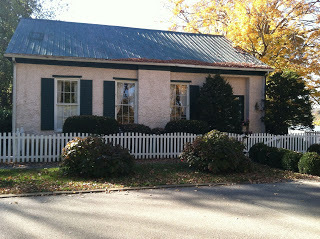
I didn't know then that the seed of a book had been planted.

In the fall of 2014, I went back to Augusta and stayed in a log cabin to get the feel of it.


I could see the where a long-ago ax had made its mark on the logs, and where a long-ago hand had chinked with clay and pebbles from the creek.

And so with a different kind of toil--fingers on a keyboard--I wove stories together. Neely, the intuitive pastry chef, who tries to come to terms with the father who abandoned her and to a dissolution of her marriage. A new love trying to bloom. The Wanderers and Healers who have something to reveal to her as well as a recalcitrant bride and her society mother.
My daughter Sarah was getting married as I was finishing this book (no resemblance to the mother/daughter drama in the book, thank goodness!).
Her ring was created with family diamonds, passed down through generations, and we imagined all the women in our family coming together, in spirit, to wish her a happy life.
Isn't that what we all want? To find the place where we belong and bloom there.
If you e-mail me and tell me you have ordered or purchased The Memory of Lemon, I will send you a downloadable booklet of recipes, my thank you!
Kentucky Lemon Pie
This recipe, passed down through generations and families, holds a key to understanding in The Memory of Lemon. Made with thin sliced whole lemons, it’s puckery and tart. And my family's favorite.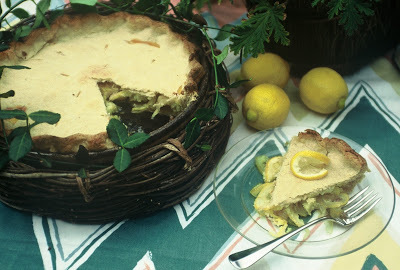 Makes 1 9-inch pie Pastry for a double-crust pie2 large lemons2 cups granulated sugar4 large eggs, well beaten Slice lemons paper thin, rind and all; discard seeds. Combine with the sugar in a bowl. Let stand 2 hours or longer, preferably blending occasionally. Add beaten eggs to the lemon mixture; mix well. Turn into a 9-inch pie shell, arranging lemon slices evenly. Cover with top crust. Cut several slits near the center. Bake at 450 degrees for 15 minutes. Reduce heat to 375 degrees and bake for about 20 minutes, or until a silver knife inserted near the edge of the pie comes out clean. Cool before serving. From We Make You Kindly Welcome: Recipes from the Trustees House Daily Fare, Pleasant Hill, Kentucky.
Makes 1 9-inch pie Pastry for a double-crust pie2 large lemons2 cups granulated sugar4 large eggs, well beaten Slice lemons paper thin, rind and all; discard seeds. Combine with the sugar in a bowl. Let stand 2 hours or longer, preferably blending occasionally. Add beaten eggs to the lemon mixture; mix well. Turn into a 9-inch pie shell, arranging lemon slices evenly. Cover with top crust. Cut several slits near the center. Bake at 450 degrees for 15 minutes. Reduce heat to 375 degrees and bake for about 20 minutes, or until a silver knife inserted near the edge of the pie comes out clean. Cool before serving. From We Make You Kindly Welcome: Recipes from the Trustees House Daily Fare, Pleasant Hill, Kentucky.


You had to take a ferry to get there, and I remember the feeling of the river running beneath my feet as I stood on the deck. The Augusta skyline got closer and closer. I felt like I had left my old life behind and stepped into a place where time had stood much stiller.



On the wide front porch of the Old Methodist Church, built in 1819, which my parents had converted into a two-bedroom home, I could watch the river in all its moods--somber gray in winter, sparkling green in sunlight, muddy and turbulent during a storm. My mother planted an herb garden full of old-fashioned favorites like blue-starred borage, Rober's Lemon Rose scented geranium, medicinal horehound.


I didn't know then that the seed of a book had been planted.

In the fall of 2014, I went back to Augusta and stayed in a log cabin to get the feel of it.


I could see the where a long-ago ax had made its mark on the logs, and where a long-ago hand had chinked with clay and pebbles from the creek.

And so with a different kind of toil--fingers on a keyboard--I wove stories together. Neely, the intuitive pastry chef, who tries to come to terms with the father who abandoned her and to a dissolution of her marriage. A new love trying to bloom. The Wanderers and Healers who have something to reveal to her as well as a recalcitrant bride and her society mother.
My daughter Sarah was getting married as I was finishing this book (no resemblance to the mother/daughter drama in the book, thank goodness!).
Her ring was created with family diamonds, passed down through generations, and we imagined all the women in our family coming together, in spirit, to wish her a happy life.
Isn't that what we all want? To find the place where we belong and bloom there.
If you e-mail me and tell me you have ordered or purchased The Memory of Lemon, I will send you a downloadable booklet of recipes, my thank you!
Kentucky Lemon Pie
This recipe, passed down through generations and families, holds a key to understanding in The Memory of Lemon. Made with thin sliced whole lemons, it’s puckery and tart. And my family's favorite.
 Makes 1 9-inch pie Pastry for a double-crust pie2 large lemons2 cups granulated sugar4 large eggs, well beaten Slice lemons paper thin, rind and all; discard seeds. Combine with the sugar in a bowl. Let stand 2 hours or longer, preferably blending occasionally. Add beaten eggs to the lemon mixture; mix well. Turn into a 9-inch pie shell, arranging lemon slices evenly. Cover with top crust. Cut several slits near the center. Bake at 450 degrees for 15 minutes. Reduce heat to 375 degrees and bake for about 20 minutes, or until a silver knife inserted near the edge of the pie comes out clean. Cool before serving. From We Make You Kindly Welcome: Recipes from the Trustees House Daily Fare, Pleasant Hill, Kentucky.
Makes 1 9-inch pie Pastry for a double-crust pie2 large lemons2 cups granulated sugar4 large eggs, well beaten Slice lemons paper thin, rind and all; discard seeds. Combine with the sugar in a bowl. Let stand 2 hours or longer, preferably blending occasionally. Add beaten eggs to the lemon mixture; mix well. Turn into a 9-inch pie shell, arranging lemon slices evenly. Cover with top crust. Cut several slits near the center. Bake at 450 degrees for 15 minutes. Reduce heat to 375 degrees and bake for about 20 minutes, or until a silver knife inserted near the edge of the pie comes out clean. Cool before serving. From We Make You Kindly Welcome: Recipes from the Trustees House Daily Fare, Pleasant Hill, Kentucky.
Published on May 09, 2016 16:46
April 25, 2016
Memories of Lemon: Homemade Citrus-Scented Twinkies
Most of us who grew up in the United States have memories of eating Twinkies, those cream-filled cylindrical sponge cakes made by Hostess.
In the run-up to The Memory of Lemon (June 14, 2016), I'm counting down with my favorite citrus-flavored recipes.

And a repeat of my offer: If you pre-order The Memory of Lemon from your favorite bookseller or purchase The Cake Therapist or Bake Happy, let me know and I'll send you a colorful, downloadable booklet of the best lemony recipes.
Contact me at : judithfertig1@gmail.com and I'll send it to you as a lemony thank-you!
Back to Twinkies.
Recently David Leite of Leite's Culinaria featured a post on Homemade Hostess Cupcakes Recipe by Jennifer Steinhauer, and they look fabulous. Wouldn't it be fun to get with a friend and make both Hostess Cupcakes and Twinkies for a gathering?
People were in a panic when Hostess Twinkies suddenly disappeared from grocery store shelves in 2013. Twinkies debuted in 1930 with a banana cream filling that was switched to vanilla after World War II. I loved Twinkies as a kid, but as an adult, I want more flavor and better ingredients. I came across Alison Okabayashi of Pretty Please Bakeshop in San Francisco who creates her own versions, which she calls “Twinks,” in upscale flavors of red velvet, pumpkin, and raspberry. They’re part of her “Nostalgics” line that also includes Ding Dongs and Whoopie Pies.
Inspired by Allison’s creations, these Homemade Twinkies deliver on flavor with an orange glaze, a tender citrus-scented chiffon cake, and a fluffy filling. I had one wrapped up to give to a friend, but during a bad patch of winter weather, I forgot it in the back seat of my car for a week. When I unwrapped it and took a bite, just to see, it was still moist and delicious in true—but preservative-free—Twinkie style.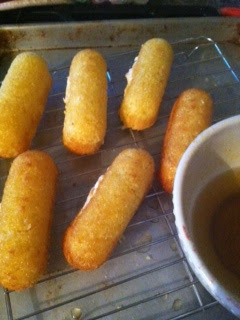
To make these nostalgic treats, you’ll need a canoe or Twinkie pan, which you can find at craft stores, cake supply shops, or online.
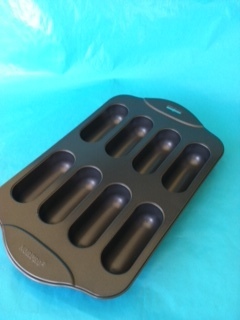
Make the syrup first, up to a week ahead, and then bake up those Homemade Twinkies!Orange-Cardamom Syrup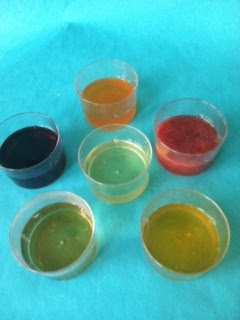 Homemade Syrups from Bake Happy: Orange-Cardamom is on the bottom right.
Homemade Syrups from Bake Happy: Orange-Cardamom is on the bottom right.
Drizzled over Citrus-Glazed Sweet Potato Pound Cake or fresh cut citrus fruit, this heady syrup dazzles. Makes about 1 cup (250 ml)1 cup (200 g) granulated or raw sugarZest and juice of 1 orange1/2 cup (125 ml) water1 teaspoon cardamom seeds or 1/2 teaspoon ground cardamomIn a large, microwave-safe glass measuring cup, combine the sugar, orange zest and juice, water, and cardamom. Microwave on high until the sugar dissolves, about 3 to 4 minutes. Let the mixture steep for 20 to 30 minutes at room temperature, then strain it through a fine-mesh sieve into a medium bowl; discard the solids. Let the syrup cool and use it right away or store it in a covered glass jar in the refrigerator for up to 2 weeks.Let the mixture steep for 20 to 30 minutes. Then strain the mixture into a bowl and let cool. Use right away or store in a covered glass jar in the refrigerator for up to 2 weeks.
So Happy TogetherOrange + Cardamom Cardamom, a member of the ginger family, is native to Pakistan, Bhutan, Nepal, and India. Cardamom and cinnamon star together in traditional Swedish bakingWhen paired with orange, but thethis aromatic green cardamom spice takes on makes bright-flavored orange taste slightly mysterious and edgy characteristics.
Homemade Twinkies from Bake HappyMakes 18 TwinkiesBaking spray, for the panTwinkie Chiffon Cake:4 large egg whites1/4 teaspoon cream of tartar1 cup plus 2 tablespoons (108 g) cake flour3/4 cup (155 g) granulated sugar11/2 teaspoons baking powder1/2 teaspoon fine salt1/3 cup (75 ml) cold water1/4 cup (59 ml) vegetable oil11/2 teaspoons freshly grated lemon zestJuice of 1 lemon3 large egg yolksMarshmallow Filling:6 tablespoons (90 g) unsalted butter, at room temperature1 cup (120 g) confectioners’ sugar, sifted21/2 teaspoons vanilla extract1/8 teaspoon fine salt1 (7-ounce/198-g) jar marshmallow cremeGlaze:1 recipe Orange-Cardamom Syrup (above), preparedPreheat the oven to 325°F (160°C). Spray the inside of a canoe or Twinkie pan with baking spray and set it aside. For the Twinkie Chiffon Cake, in the bowl of an electric mixer, beat the egg whites with the cream of tartar almost until stiff peaks form—the peak should just turn over as you remove the beaters, about 6 minutes; set the bowl aside. In another large bowl, sift together the flour, sugar, baking powder, and salt; set the bowl aside. In a separate small bowl, stir together the cold water, oil, lemon zest and juice, and egg yolks, and stir this mixture into the dry ingredients to make a smooth batter. Pour the batter over the beaten egg whites, one-third at a time, folding the batter into the egg whites with a rubber spatula, using a figure-8 pattern and scooping up from the bottom of the bowl until the batter is evenly colored. Fill each cylindrical depression in the canoe pan half full with batter.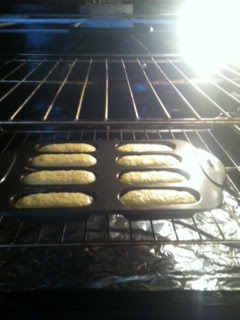
Bake until the tops of the cakes spring back when lightly touched and are a golden color, about 15 minutes. Remove the pan from the oven and turn the cakes out onto a cooling rack. Re-spray the canoe pan and repeat the process with the remaining batter. Let the Twinks cool completely after baking.For the Marshmallow Filling, in the bowl of a food processor or electric mixer, combine the butter, confectioners’ sugar, vanilla, salt, and marshmallow creme and process or beat the mixture until smooth.
To assemble the Twinkies, cut each Twinkie almost in half lengthwise, like you would a hot dog bun. Spread about 1 to 2 tablespoons of filling on the bottom half and sandwich the top and bottom halves together. Place each filled Twinkie on a sheet of aluminum foil or parchment paper for easier cleanup. Brush each with the glaze and let sit for 30 minutes to dry. Serve the Twinkies right away or store them in an airtight container at room temperature for up to 1 week.

In the run-up to The Memory of Lemon (June 14, 2016), I'm counting down with my favorite citrus-flavored recipes.

And a repeat of my offer: If you pre-order The Memory of Lemon from your favorite bookseller or purchase The Cake Therapist or Bake Happy, let me know and I'll send you a colorful, downloadable booklet of the best lemony recipes.
Contact me at : judithfertig1@gmail.com and I'll send it to you as a lemony thank-you!
Back to Twinkies.
Recently David Leite of Leite's Culinaria featured a post on Homemade Hostess Cupcakes Recipe by Jennifer Steinhauer, and they look fabulous. Wouldn't it be fun to get with a friend and make both Hostess Cupcakes and Twinkies for a gathering?
People were in a panic when Hostess Twinkies suddenly disappeared from grocery store shelves in 2013. Twinkies debuted in 1930 with a banana cream filling that was switched to vanilla after World War II. I loved Twinkies as a kid, but as an adult, I want more flavor and better ingredients. I came across Alison Okabayashi of Pretty Please Bakeshop in San Francisco who creates her own versions, which she calls “Twinks,” in upscale flavors of red velvet, pumpkin, and raspberry. They’re part of her “Nostalgics” line that also includes Ding Dongs and Whoopie Pies.
Inspired by Allison’s creations, these Homemade Twinkies deliver on flavor with an orange glaze, a tender citrus-scented chiffon cake, and a fluffy filling. I had one wrapped up to give to a friend, but during a bad patch of winter weather, I forgot it in the back seat of my car for a week. When I unwrapped it and took a bite, just to see, it was still moist and delicious in true—but preservative-free—Twinkie style.

To make these nostalgic treats, you’ll need a canoe or Twinkie pan, which you can find at craft stores, cake supply shops, or online.

Make the syrup first, up to a week ahead, and then bake up those Homemade Twinkies!Orange-Cardamom Syrup
 Homemade Syrups from Bake Happy: Orange-Cardamom is on the bottom right.
Homemade Syrups from Bake Happy: Orange-Cardamom is on the bottom right.Drizzled over Citrus-Glazed Sweet Potato Pound Cake or fresh cut citrus fruit, this heady syrup dazzles. Makes about 1 cup (250 ml)1 cup (200 g) granulated or raw sugarZest and juice of 1 orange1/2 cup (125 ml) water1 teaspoon cardamom seeds or 1/2 teaspoon ground cardamomIn a large, microwave-safe glass measuring cup, combine the sugar, orange zest and juice, water, and cardamom. Microwave on high until the sugar dissolves, about 3 to 4 minutes. Let the mixture steep for 20 to 30 minutes at room temperature, then strain it through a fine-mesh sieve into a medium bowl; discard the solids. Let the syrup cool and use it right away or store it in a covered glass jar in the refrigerator for up to 2 weeks.Let the mixture steep for 20 to 30 minutes. Then strain the mixture into a bowl and let cool. Use right away or store in a covered glass jar in the refrigerator for up to 2 weeks.
So Happy TogetherOrange + Cardamom Cardamom, a member of the ginger family, is native to Pakistan, Bhutan, Nepal, and India. Cardamom and cinnamon star together in traditional Swedish bakingWhen paired with orange, but thethis aromatic green cardamom spice takes on makes bright-flavored orange taste slightly mysterious and edgy characteristics.
Homemade Twinkies from Bake HappyMakes 18 TwinkiesBaking spray, for the panTwinkie Chiffon Cake:4 large egg whites1/4 teaspoon cream of tartar1 cup plus 2 tablespoons (108 g) cake flour3/4 cup (155 g) granulated sugar11/2 teaspoons baking powder1/2 teaspoon fine salt1/3 cup (75 ml) cold water1/4 cup (59 ml) vegetable oil11/2 teaspoons freshly grated lemon zestJuice of 1 lemon3 large egg yolksMarshmallow Filling:6 tablespoons (90 g) unsalted butter, at room temperature1 cup (120 g) confectioners’ sugar, sifted21/2 teaspoons vanilla extract1/8 teaspoon fine salt1 (7-ounce/198-g) jar marshmallow cremeGlaze:1 recipe Orange-Cardamom Syrup (above), preparedPreheat the oven to 325°F (160°C). Spray the inside of a canoe or Twinkie pan with baking spray and set it aside. For the Twinkie Chiffon Cake, in the bowl of an electric mixer, beat the egg whites with the cream of tartar almost until stiff peaks form—the peak should just turn over as you remove the beaters, about 6 minutes; set the bowl aside. In another large bowl, sift together the flour, sugar, baking powder, and salt; set the bowl aside. In a separate small bowl, stir together the cold water, oil, lemon zest and juice, and egg yolks, and stir this mixture into the dry ingredients to make a smooth batter. Pour the batter over the beaten egg whites, one-third at a time, folding the batter into the egg whites with a rubber spatula, using a figure-8 pattern and scooping up from the bottom of the bowl until the batter is evenly colored. Fill each cylindrical depression in the canoe pan half full with batter.

Bake until the tops of the cakes spring back when lightly touched and are a golden color, about 15 minutes. Remove the pan from the oven and turn the cakes out onto a cooling rack. Re-spray the canoe pan and repeat the process with the remaining batter. Let the Twinks cool completely after baking.For the Marshmallow Filling, in the bowl of a food processor or electric mixer, combine the butter, confectioners’ sugar, vanilla, salt, and marshmallow creme and process or beat the mixture until smooth.
To assemble the Twinkies, cut each Twinkie almost in half lengthwise, like you would a hot dog bun. Spread about 1 to 2 tablespoons of filling on the bottom half and sandwich the top and bottom halves together. Place each filled Twinkie on a sheet of aluminum foil or parchment paper for easier cleanup. Brush each with the glaze and let sit for 30 minutes to dry. Serve the Twinkies right away or store them in an airtight container at room temperature for up to 1 week.

Published on April 25, 2016 07:54
April 20, 2016
More Memories of Lemon: Lemon Verbena Pound Cake
I"m counting the days until The Memory of Lemon is published, June 14.
And I have a special offer.
If you pre-order The Memory of Lemon wherever you buy books,

purchase The Cake Therapist,
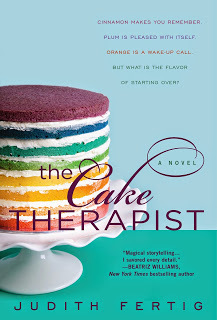
 or buy Bake Happy, I will send you a beautiful full-color, downloadable booklet of my favorite lemon recipes.
or buy Bake Happy, I will send you a beautiful full-color, downloadable booklet of my favorite lemon recipes.
Just shoot me an e-mail @
judithfertig1@gmail.com and I'll send it to you.
It's my lemony thank-you to you!
And I'm including a fabulous lemon recipe here.
Lemon Verbena Pound Cake
Pound cake comes to the American dessert repertoire from European roots. The French call it “quatre quarts” or four fourths. The British just knew that a pound of four different ingredients—butter, flour, eggs, and sugar—was needed to make this cake and named it accordingly. With lemon in the batter and a tracery of lemon-scented leaves, this moist and fragrant pound cake is wonderful.
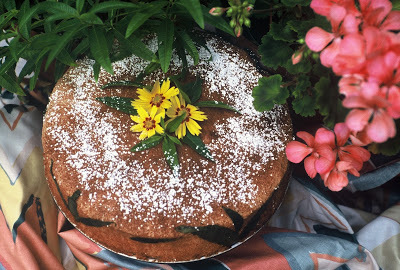
Makes (12-cup) tube or Bundt cake to serve 12
Fresh lemon verbena, lemon balm, or Rober's Lemon Rose scented geranium leavesSoftened butter for the pan3/4 pound (3 sticks) unsalted butter, softened1 (8-ounce) package cream cheese, softened3 cups sugar 6 jumbo eggs 3 cups sifted cake flour2 teaspoons vanilla extract2 teaspoons lemon zestConfectioners' sugar for dusting
Preheat the oven to 325 degrees. Butter and flour a (12-cup) tube or Bundt cake . Press fresh leaves into the perimeter of the pan and set aside.
With an electric mixer or food processor, cream the butter and cream cheese together until smooth. Beat in the sugar until fluffy. Add the eggs, one at a time, beating well after each addition. Stir in the flour, a little at a time, until well blended. Stir in the flavorings. Pour the batter into the prepared pan.
Bake for 1 hour and 10 minutes, or until a toothpick inserted in the center comes out clean. Cool in the pan for 10 minutes, then invert the cake on a wire rack to cool completely. Dust with confectioner’s sugar before serving.
And I have a special offer.
If you pre-order The Memory of Lemon wherever you buy books,

purchase The Cake Therapist,

 or buy Bake Happy, I will send you a beautiful full-color, downloadable booklet of my favorite lemon recipes.
or buy Bake Happy, I will send you a beautiful full-color, downloadable booklet of my favorite lemon recipes.Just shoot me an e-mail @
judithfertig1@gmail.com and I'll send it to you.
It's my lemony thank-you to you!
And I'm including a fabulous lemon recipe here.
Lemon Verbena Pound Cake
Pound cake comes to the American dessert repertoire from European roots. The French call it “quatre quarts” or four fourths. The British just knew that a pound of four different ingredients—butter, flour, eggs, and sugar—was needed to make this cake and named it accordingly. With lemon in the batter and a tracery of lemon-scented leaves, this moist and fragrant pound cake is wonderful.

Makes (12-cup) tube or Bundt cake to serve 12
Fresh lemon verbena, lemon balm, or Rober's Lemon Rose scented geranium leavesSoftened butter for the pan3/4 pound (3 sticks) unsalted butter, softened1 (8-ounce) package cream cheese, softened3 cups sugar 6 jumbo eggs 3 cups sifted cake flour2 teaspoons vanilla extract2 teaspoons lemon zestConfectioners' sugar for dusting
Preheat the oven to 325 degrees. Butter and flour a (12-cup) tube or Bundt cake . Press fresh leaves into the perimeter of the pan and set aside.
With an electric mixer or food processor, cream the butter and cream cheese together until smooth. Beat in the sugar until fluffy. Add the eggs, one at a time, beating well after each addition. Stir in the flour, a little at a time, until well blended. Stir in the flavorings. Pour the batter into the prepared pan.
Bake for 1 hour and 10 minutes, or until a toothpick inserted in the center comes out clean. Cool in the pan for 10 minutes, then invert the cake on a wire rack to cool completely. Dust with confectioner’s sugar before serving.
Published on April 20, 2016 11:44
April 3, 2016
Memory Monday 2: Porch Swing Lemonade
The new Country Living Magazine is devoted to the idea of "porching." (I can't tell you how many times auto-correct has tried to change that to "porting.")

That's right. Porching. As in having a porch, decorating your porch, inviting friends and family over to your porch, and enjoying quiet moments there yourself.
Serenbe, a fairly new planned community near Atlanta, Georgia, is known as the Porch Capital of the United States because this architectural feature is a prominent one in their home designs.
So what's the deal with the porch? Why bring it back?
With the advent of air conditioning in the 1960s, we gained a lot of comfort but lost a lot of socialization. People used to gather on their front porches during hot nights in the summer, sitting in a porch swing and drinking a cool and refreshing beverage as they talked to neighbors who walked by or came up for a visit.
Face-to-face. Imagine that.
A porch is public and private.
You can sit out on the front porch and read a good book or two. . .

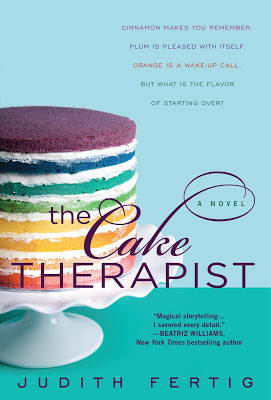
. . . and people see you and sigh, thinking "that's the good life." (As well as "I have to buy that book. ")
With or without a porch, you can still channel that easy, breezy, outdoors-but-civilized feeling with Porch Swing Lemonade.

Made with a fresh herb syrup straight from your garden and fresh lemons, it is flavor worlds away from that canister of powdery lemonade mix.
You can chop a little rhubarb and cook it in the syrup to make it pink, float fresh fruit in your lemonade, or serve it in an old-fashioned glass crock and garnish with more fresh herbs.
Porch Swing Lemonade
Wouldn’t it be nice to sit on the porch swing and visit with your neighbors, sipping a homemade lemonade? You really can sit back and relax if you make the syrups a few weeks or days ahead. Squeeze the fresh lemon juice right before you want to serve the drink. Stir it all together in a pitcher or portable container, and serve over ice. Adapted from Heartland: The Cookbook.
Serves 4 to 6
Fresh Herb Syrup:1 cup sugar¾ cup water½ cup packed fresh aromatic herb leaves, such as basil or lemon balm
1 cup freshly squeezed lemon juice (from about 7 large lemons)1 1/2 cups waterFresh lemon slices, for garnishSprigs of lemon balm or rosemary, for garnish
For the syrup, combine the sugar, water and herbs in a large microwave-safe glass measuring cup. Microwave on High for 3 to 4 minutes or until the sugar dissolves. Let the mixture steep for 20 to 30 minutes to extract the best flavor.Strain the mixture into a bowl and let cool. Use right away or store in a covered glass jar and refrigerate for up to 2 weeks.Stir the lemon juice, syrup, water, and sugar together in a large pitcher. Add lemon or lime slices and herb sprigs, if you wish. Add more sugar to taste, if desired. Serve cold.


That's right. Porching. As in having a porch, decorating your porch, inviting friends and family over to your porch, and enjoying quiet moments there yourself.
Serenbe, a fairly new planned community near Atlanta, Georgia, is known as the Porch Capital of the United States because this architectural feature is a prominent one in their home designs.
So what's the deal with the porch? Why bring it back?
With the advent of air conditioning in the 1960s, we gained a lot of comfort but lost a lot of socialization. People used to gather on their front porches during hot nights in the summer, sitting in a porch swing and drinking a cool and refreshing beverage as they talked to neighbors who walked by or came up for a visit.
Face-to-face. Imagine that.
A porch is public and private.
You can sit out on the front porch and read a good book or two. . .


. . . and people see you and sigh, thinking "that's the good life." (As well as "I have to buy that book. ")
With or without a porch, you can still channel that easy, breezy, outdoors-but-civilized feeling with Porch Swing Lemonade.

Made with a fresh herb syrup straight from your garden and fresh lemons, it is flavor worlds away from that canister of powdery lemonade mix.
You can chop a little rhubarb and cook it in the syrup to make it pink, float fresh fruit in your lemonade, or serve it in an old-fashioned glass crock and garnish with more fresh herbs.
Porch Swing Lemonade
Wouldn’t it be nice to sit on the porch swing and visit with your neighbors, sipping a homemade lemonade? You really can sit back and relax if you make the syrups a few weeks or days ahead. Squeeze the fresh lemon juice right before you want to serve the drink. Stir it all together in a pitcher or portable container, and serve over ice. Adapted from Heartland: The Cookbook.
Serves 4 to 6
Fresh Herb Syrup:1 cup sugar¾ cup water½ cup packed fresh aromatic herb leaves, such as basil or lemon balm
1 cup freshly squeezed lemon juice (from about 7 large lemons)1 1/2 cups waterFresh lemon slices, for garnishSprigs of lemon balm or rosemary, for garnish
For the syrup, combine the sugar, water and herbs in a large microwave-safe glass measuring cup. Microwave on High for 3 to 4 minutes or until the sugar dissolves. Let the mixture steep for 20 to 30 minutes to extract the best flavor.Strain the mixture into a bowl and let cool. Use right away or store in a covered glass jar and refrigerate for up to 2 weeks.Stir the lemon juice, syrup, water, and sugar together in a large pitcher. Add lemon or lime slices and herb sprigs, if you wish. Add more sugar to taste, if desired. Serve cold.

Published on April 03, 2016 13:48
March 28, 2016
Memory Monday:
Citrus-Scented Madeleines with Burnt Honey Cream
If there ever was a mindful thing to bake, it is madeleines.
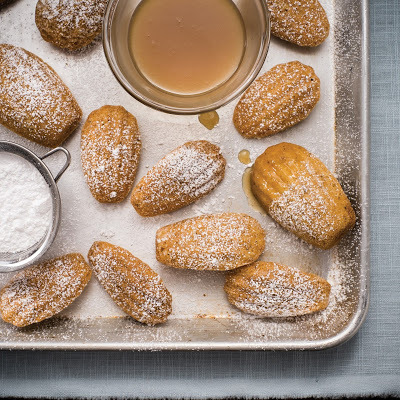
These are the little, scallop-shell-shaped cakes that famously brought back memories for French writer Marcel Proust.
Tender, buttery, aromatic with citrus, the madeleines are as light as a passing thought. And then there's the fabulous caramelized honey cream to dip them in. Another piece of heaven!
Here's my in-process photo, below, from Bake Happy (Running Press, 2015)
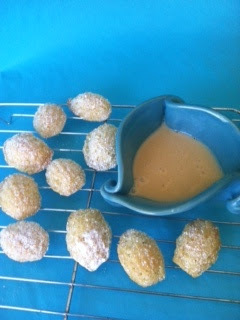
There is something about the scent of butter and citrus together that does take you back, pleasantly, in time.
Flavor, like scent, can do that.
Lemon is the delicious and aromatic core of my new novel The Memory of Lemon (Penguin Random House) which comes out on June 14, 2016. It's a sequel to The Cake Therapist and continues the story of Neely, the baker who can "read" people as flavors, discovering their secrets.

When I make madeleines, I’m back at La Varenne Ecole de Cuisine when it was in Paris, and Dehillerin, an Aladdin’s cave of culinary equipment, where I bought my madeleine pan.
Madeleines can be tricky—you’ll need a madeleine pan—so set aside the time, follow thedirections, and give yourself up to the moment and the exacting method.
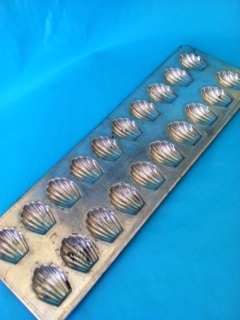
I’ve found that lightly but thoroughly coating the madeleine molds with baking spray—definitely not French, but it works—is the easiest way to get the scallop shell-shaped cakes out of the molds after baking. Only fill the madeleine molds halfway full.
Just figure the first batch is practice, and they don’t have to be perfect: just delicious.
The Burnt Honey Cream is also delicious spooned over fresh fruits and pound cake. Adapted from a recipe by Eryn Chesney.Citrus and Browned Butter Madeleines with Burnt Honey CreamAdapted from Bake Happy (Running Press, 2015) by Judith Fertig.The scent and flavor of citrus and browned butter in the madeleines and the caramelized honey in the dipping sauce will transport yout to a happy place, just as Proust was in his early twentieth century novel In Search of Lost Time. Makes 24 large or 40 small madeleinesCitrus and Browned Butter Madeleines:1/2 cup (113 g) unsalted butter, plus more for the pan3 large eggs, at room temperature2/3 cup (150 g) granulated sugar1 cup (125 g) unbleached all-purpose flour, plus more for the pan1 teaspoon vanilla extract1/2 teaspoon lemon zest1/2 teaspoon orange zest1/2 teaspoon baking powderBaking sprayConfectioners’ sugar for dustingBurnt Honey Cream:1/2 cup (170 g) clover, wildflower, or other amber honey11/2 cups (375 ml) heavy whipping cream1/8 teaspoon saltFor the Citrus and Browned Butter Madeleines, melt the butter in a small light-colored or stainless steel skillet, over medium-high heat until it turns a golden brown. The butter will foam, then the foam will subside; bigger, clear bubbles will form, and in about 1 to 2 minutes from that point, the butter will start to brown. Remove from the heat and let cool until just warm.With an electric mixer, beat the eggs and sugar together until the mixture is thick and pale yellow. The mixture should ribbon from the beaters when you stop the mixer and lift the beaters up. With a spatula, fold in the flour, vanilla, citrus zests, and baking powder until smooth and well blended. Fold in the browned butter, including the browned bits, until well blended. Cover and chill the batter for at least 1 hour or up to overnight. For the honey cream, place the honey in a saucepan over medium-high heat. Bring to a boil and cook until the honey has caramelized and reduced, about 4 minutes. Carefully whisk in the cream until well blended and continue to cook until the cream has reduced, and, thickened, and coats the back of a spoon. Stir in the salt. Set aside to cool.When ready to bake, preheat the oven to 375°F (190°C). Lightly but thoroughly spray the inside of a madeleine pan; wipe out any extra baking spray foam with a paper towel, as this could interfere with the scallop shell design. Fill each cavity half full of batter. The batter will spread and fill each mold as it bakes.
Bake for 8 to 10 minutes or until the edges turn golden brown and the top feels springy to the touch. Turn the madeleines out of the pan onto wire racks, using a table knife to help dislodge if necessary. Dust the warm madeleines with confectioners’ sugar.
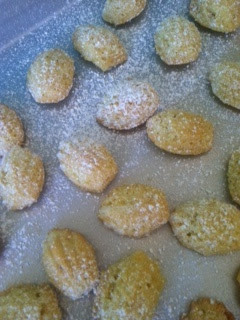
Dip them into the warm honey cream and remember every wonderful moment in your life.

If there ever was a mindful thing to bake, it is madeleines.

These are the little, scallop-shell-shaped cakes that famously brought back memories for French writer Marcel Proust.
Tender, buttery, aromatic with citrus, the madeleines are as light as a passing thought. And then there's the fabulous caramelized honey cream to dip them in. Another piece of heaven!
Here's my in-process photo, below, from Bake Happy (Running Press, 2015)

There is something about the scent of butter and citrus together that does take you back, pleasantly, in time.
Flavor, like scent, can do that.
Lemon is the delicious and aromatic core of my new novel The Memory of Lemon (Penguin Random House) which comes out on June 14, 2016. It's a sequel to The Cake Therapist and continues the story of Neely, the baker who can "read" people as flavors, discovering their secrets.

When I make madeleines, I’m back at La Varenne Ecole de Cuisine when it was in Paris, and Dehillerin, an Aladdin’s cave of culinary equipment, where I bought my madeleine pan.
Madeleines can be tricky—you’ll need a madeleine pan—so set aside the time, follow thedirections, and give yourself up to the moment and the exacting method.

I’ve found that lightly but thoroughly coating the madeleine molds with baking spray—definitely not French, but it works—is the easiest way to get the scallop shell-shaped cakes out of the molds after baking. Only fill the madeleine molds halfway full.
Just figure the first batch is practice, and they don’t have to be perfect: just delicious.
The Burnt Honey Cream is also delicious spooned over fresh fruits and pound cake. Adapted from a recipe by Eryn Chesney.Citrus and Browned Butter Madeleines with Burnt Honey CreamAdapted from Bake Happy (Running Press, 2015) by Judith Fertig.The scent and flavor of citrus and browned butter in the madeleines and the caramelized honey in the dipping sauce will transport yout to a happy place, just as Proust was in his early twentieth century novel In Search of Lost Time. Makes 24 large or 40 small madeleinesCitrus and Browned Butter Madeleines:1/2 cup (113 g) unsalted butter, plus more for the pan3 large eggs, at room temperature2/3 cup (150 g) granulated sugar1 cup (125 g) unbleached all-purpose flour, plus more for the pan1 teaspoon vanilla extract1/2 teaspoon lemon zest1/2 teaspoon orange zest1/2 teaspoon baking powderBaking sprayConfectioners’ sugar for dustingBurnt Honey Cream:1/2 cup (170 g) clover, wildflower, or other amber honey11/2 cups (375 ml) heavy whipping cream1/8 teaspoon saltFor the Citrus and Browned Butter Madeleines, melt the butter in a small light-colored or stainless steel skillet, over medium-high heat until it turns a golden brown. The butter will foam, then the foam will subside; bigger, clear bubbles will form, and in about 1 to 2 minutes from that point, the butter will start to brown. Remove from the heat and let cool until just warm.With an electric mixer, beat the eggs and sugar together until the mixture is thick and pale yellow. The mixture should ribbon from the beaters when you stop the mixer and lift the beaters up. With a spatula, fold in the flour, vanilla, citrus zests, and baking powder until smooth and well blended. Fold in the browned butter, including the browned bits, until well blended. Cover and chill the batter for at least 1 hour or up to overnight. For the honey cream, place the honey in a saucepan over medium-high heat. Bring to a boil and cook until the honey has caramelized and reduced, about 4 minutes. Carefully whisk in the cream until well blended and continue to cook until the cream has reduced, and, thickened, and coats the back of a spoon. Stir in the salt. Set aside to cool.When ready to bake, preheat the oven to 375°F (190°C). Lightly but thoroughly spray the inside of a madeleine pan; wipe out any extra baking spray foam with a paper towel, as this could interfere with the scallop shell design. Fill each cavity half full of batter. The batter will spread and fill each mold as it bakes.
Bake for 8 to 10 minutes or until the edges turn golden brown and the top feels springy to the touch. Turn the madeleines out of the pan onto wire racks, using a table knife to help dislodge if necessary. Dust the warm madeleines with confectioners’ sugar.

Dip them into the warm honey cream and remember every wonderful moment in your life.

Published on March 28, 2016 11:06
October 18, 2015
The 10 Days of Pumpkin
Day Four: Sweet Dumpling Tartlets with Maple Custard
If pumpkin is the flavor of coming home, what does that mean when you've lived all over, when your family is scattered?
Where, exactly, is home?
My mother just passed away, peacefully in her sleep, after a long illness. She and my dad had been married 66 years. My sister and I gravitate between crying and then laughing at stupid family stories. We know we were lucky to have her as long as we did. Even though we knew she was very frail, we still weren't quite ready to let her go.
But she is going home to join loved ones who made that same journey long before. That's what I want to believe.
The last time I wondered about the idea of home was when my son left for college and I was an empty-nester. The theme of home threads through a cookbook I was writing at the time, Prairie Home Breads.
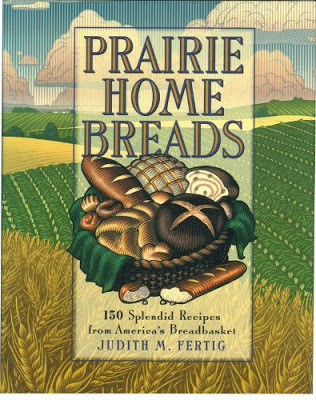
Now I think that home is in the flavor of something baked, something that can lift your spirits when you need that most.
And as The Cake Therapist reminds me,
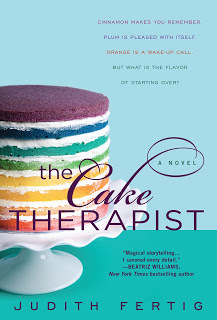
spice is the flavor of grief because it's the flavor that lasts longest. As friends and family have shared their own losses, I am beginning to understand that there are some things you just don't ever get over. And it's okay if you don't.
Friends who have lost a parent tell me that even years later, some little thing will trigger a memory and the grief will be fresh all over again. I believe it.
I've always thought that food is another way to tell a story. Although I didn't want this particular story, this is the one I have right now, about comfort in a time of sorrow and finding new meaning in the world home.
I'm putting my cookbook, Bake Happy, into practice and missing my mom.
Sweet Dumpling Tartlets with Maple Custard
Adapted from Bake Happy by Judith Fertig.A tart shell is meant to be sturdy enough to encase a filling during baking, yet attractive on its own. But who says a tart shell has to be pastry? If we like desserts that make their own sauces, then how about a vegetable that turns into a sweet tart, complete with its own shell? Sweet Dumpling squashes (in the pumpkin family), with their striped exterior and a sunset-colored interior, are too beautiful to chop into oblivion, so let them be the star of the show. Boiling down the maple syrup first helps intensify its flavor in the custard filling.
Serve the squash “tartlets” on dark green or brown dessert plates for the best effect—or line your white plates with autumn-colored cocktail napkins first.Makes 4 tartlets1/2 cup (164 g) real maple syrup, preferably Grade B 4 rounded Sweet Dumpling squash, or acorn or other small winter squash21/4 cups (550 ml) half-and-half 2 large egg yolks1 large egg1/4 teaspoon salt2 tablespoons gluten-free or other spice cookie crumbs, for garnishIn a small saucepan, bring the maple syrup to a boil over medium-high heat. Let the syrup cook until it reduces to 6 tablespoons, about 3 minutes. Remove the pan from the heat and set it aside.Preheat the oven to 350°F (180°C). Line a 9 x 13-inch (23 x 33-cm) baking dish with parchment paper. With a sturdy knife, remove the top section of each squash so the squash stands about 2 inches tall; discard the top sections. With a spoon, remove and discard the seeds and stringy pulp from the inside of each squash and discard. Place each cleaned squash shell in the prepared dish. Trim the bottoms, if necessary, so the squash sit evenly in the dish.In a medium bowl, whisk together the half-and-half, egg yolks, egg, and salt together until well blended. Whisk in the reduced maple syrup.
Divide the filling among the squash shells.Bake for 1 hour and 15 minutes or until the tops of the squash are tender when pierced with a paring knife. Remove the dish from the oven and dust each squash “tartlet” with cookie crumbs.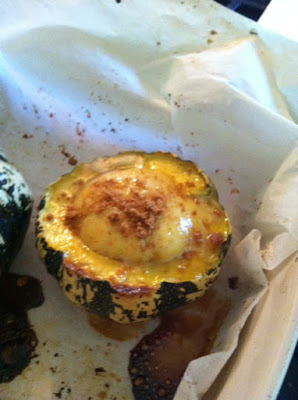
Serve hot or at room temperature. Dig into each squash, getting some of the tender flesh and creamy custard in each bite.And be comforted.

If pumpkin is the flavor of coming home, what does that mean when you've lived all over, when your family is scattered?
Where, exactly, is home?
My mother just passed away, peacefully in her sleep, after a long illness. She and my dad had been married 66 years. My sister and I gravitate between crying and then laughing at stupid family stories. We know we were lucky to have her as long as we did. Even though we knew she was very frail, we still weren't quite ready to let her go.
But she is going home to join loved ones who made that same journey long before. That's what I want to believe.
The last time I wondered about the idea of home was when my son left for college and I was an empty-nester. The theme of home threads through a cookbook I was writing at the time, Prairie Home Breads.

Now I think that home is in the flavor of something baked, something that can lift your spirits when you need that most.
And as The Cake Therapist reminds me,

spice is the flavor of grief because it's the flavor that lasts longest. As friends and family have shared their own losses, I am beginning to understand that there are some things you just don't ever get over. And it's okay if you don't.
Friends who have lost a parent tell me that even years later, some little thing will trigger a memory and the grief will be fresh all over again. I believe it.
I've always thought that food is another way to tell a story. Although I didn't want this particular story, this is the one I have right now, about comfort in a time of sorrow and finding new meaning in the world home.
I'm putting my cookbook, Bake Happy, into practice and missing my mom.
Sweet Dumpling Tartlets with Maple Custard
Adapted from Bake Happy by Judith Fertig.A tart shell is meant to be sturdy enough to encase a filling during baking, yet attractive on its own. But who says a tart shell has to be pastry? If we like desserts that make their own sauces, then how about a vegetable that turns into a sweet tart, complete with its own shell? Sweet Dumpling squashes (in the pumpkin family), with their striped exterior and a sunset-colored interior, are too beautiful to chop into oblivion, so let them be the star of the show. Boiling down the maple syrup first helps intensify its flavor in the custard filling.

Serve the squash “tartlets” on dark green or brown dessert plates for the best effect—or line your white plates with autumn-colored cocktail napkins first.Makes 4 tartlets1/2 cup (164 g) real maple syrup, preferably Grade B 4 rounded Sweet Dumpling squash, or acorn or other small winter squash21/4 cups (550 ml) half-and-half 2 large egg yolks1 large egg1/4 teaspoon salt2 tablespoons gluten-free or other spice cookie crumbs, for garnishIn a small saucepan, bring the maple syrup to a boil over medium-high heat. Let the syrup cook until it reduces to 6 tablespoons, about 3 minutes. Remove the pan from the heat and set it aside.Preheat the oven to 350°F (180°C). Line a 9 x 13-inch (23 x 33-cm) baking dish with parchment paper. With a sturdy knife, remove the top section of each squash so the squash stands about 2 inches tall; discard the top sections. With a spoon, remove and discard the seeds and stringy pulp from the inside of each squash and discard. Place each cleaned squash shell in the prepared dish. Trim the bottoms, if necessary, so the squash sit evenly in the dish.In a medium bowl, whisk together the half-and-half, egg yolks, egg, and salt together until well blended. Whisk in the reduced maple syrup.
Divide the filling among the squash shells.Bake for 1 hour and 15 minutes or until the tops of the squash are tender when pierced with a paring knife. Remove the dish from the oven and dust each squash “tartlet” with cookie crumbs.

Serve hot or at room temperature. Dig into each squash, getting some of the tender flesh and creamy custard in each bite.And be comforted.

Published on October 18, 2015 09:09



